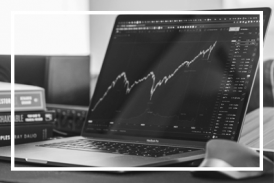California Homeowners Face New Solar Challenges in 2025, According to Chase Home Services
California solar is more complex in 2025. Chase Home Services helps homeowners save with expert guidance, incentives, and trusted local support.
Industry experts report that many homeowners are encountering unexpected hurdles — from shifting utility policies to increased equipment costs. According to Chase Home Services, a California-based solar installer, education and transparency are becoming essential for consumers navigating this evolving market.
Top 10 Challenges California Homeowners Are Facing With Solar in 2025
1️⃣ NEM 3.0 Has Changed the Game
Net Energy Metering (NEM) allows solar homeowners to send excess energy to the grid in exchange for utility bill credits. Under NEM 3.0, which took effect in 2023, credit values were reduced by approximately 75 percent. This shift has made on-site energy use and battery storage more important for maximizing savings.
"Understanding NEM 3.0 is critical to designing an effective solar system," said a spokesperson for Chase Home Services.
2️⃣ Rising Installation Costs
Supply chain disruptions and increased demand have driven up the prices of solar panels, batteries, and labor. Careful planning is now required to optimize project costs and available incentives.
3️⃣ Battery Storage: Now Essential
Lower NEM credit rates and time-of-use pricing structures are making battery storage a key component of modern solar systems. Homeowners seeking to offset high evening utility rates are increasingly adopting batteries to store solar energy produced during the day.
4️⃣ Misinformation & Aggressive Sales Tactics
An influx of out-of-state call centers and third-party sales organizations has contributed to widespread misinformation, including “zero-cost solar” claims and unrealistic bill reduction promises. Consumers are advised to work with licensed, local installers who offer clear, verifiable proposals.
5️⃣ Permitting Delays & Utility Backlogs
Many local jurisdictions are experiencing delays in solar permitting and utility interconnection approvals, extending project timelines to several months in some regions.
6️⃣ New Utility Fees
Utilities across California are introducing grid access fees, minimum charges, and higher evening rates under NEM 3.0 — factors that can erode savings if not properly addressed in system design.
7️⃣ Solar Financing — Pitfalls to Avoid
Potential financing pitfalls include hidden dealer fees, escalating lease terms, balloon payments, and early payoff penalties. Transparent financing models are crucial to ensuring long-term affordability.
8️⃣ Tax Credits & Rebates
Federal and state incentives continue to play an important role in solar project economics. The Federal Solar Investment Tax Credit (ITC) provides a 30 percent credit on system costs, while the California Self-Generation Incentive Program (SGIP) offers substantial rebates for battery storage.
Proper documentation and application are required to access these incentives, and many homeowners mistakenly assume credits are automatic.
9️⃣ System Monitoring
Reliable system monitoring is vital to track performance, battery usage, and overall savings. Poorly designed or unsupported apps can leave homeowners without insight into their system’s effectiveness.
Cargo Aircraft Charter Service Market Trends 2025-2029: Regional Outlook and Sizing Analysis
Barge Transportation Market CAGR to be at 5.5% from 2025 to 2029 | $175.44 Billion Industry Revenue by 2029
Cargo Drones Market: Future Demand and Top Key Players Analysis | 2029
Więcej ważnych informacji
 Jedynka Newserii
Jedynka Newserii

 Jedynka Newserii
Jedynka Newserii

Konsument

Polacy nie korzystają z hossy trwającej na warszawskiej giełdzie. Na wzrostach zarabiają głównie inwestorzy zagraniczni
Od października 2022 roku na rynkach akcji trwa hossa, nie omija ona także warszawskiej giełdy. Mimo to inwestorzy indywidualni odpowiadają zaledwie za kilkanaście procent inwestycji, a o wzrostach decyduje i na nich zarabia głównie kapitał z zagranicy. Widać to również po napływach i odpływach do i z funduszy inwestycyjnych. Zdaniem Tomasza Koraba, prezesa EQUES Investment TFI, do przekonania Polaków do inwestowania na rodzimej giełdzie potrzeba zysków z akcji, informacji o tych zyskach docierającej do konsumentów oraz czasu.
Polityka
Obowiązek zapełniania magazynów gazu w UE przed sezonem zimowym ma zapewnić bezpieczeństwo dostaw. Wpłynie też na stabilizację cen

Unia Europejska przedłuży przepisy z 2022 roku dotyczące magazynowania gazu. Będą one obowiązywać do końca 2027 roku. Zobowiązują one państwa członkowskie do osiągnięcia określonego poziomu zapełnienia magazynów gazu przed sezonem zimowym. Magazyny gazu pokrywają 30 proc. zapotrzebowania Unii Europejskiej na niego w miesiącach zimowych. Nowe unijne przepisy mają zapewnić stabilne i przystępne cenowo dostawy.
Infrastruktura
Gminy zwlekają z uchwaleniem planów ogólnych zagospodarowania przestrzennego. Może to spowodować przesunięcie terminu ich wejścia w życie

Reforma systemu planowania i zagospodarowania przestrzennego rozpoczęła się we wrześniu 2023 roku wraz z wejściem w życie większości przepisów nowelizacji ustawy z 27 marca 2003 roku. Uwzględniono w niej plany ogólne gminy (POG) – nowe dokumenty planistyczne, za których przygotowanie mają odpowiadać samorządy. Rada Ministrów w kwietniu br. uchwaliła jednak ustawę o zmianie ustawy z 7 lipca 2023 roku, a jej celem jest zmiana terminu obowiązywania studiów uwarunkowań i kierunków zagospodarowania przestrzennego gmin na 30 czerwca 2026 roku. Wskazana data może nie być ostateczna z uwagi na to, że żadna z gmin nie uchwaliła jeszcze POG.
Partner serwisu
Szkolenia

Akademia Newserii
Akademia Newserii to projekt, w ramach którego najlepsi polscy dziennikarze biznesowi, giełdowi oraz lifestylowi, a także szkoleniowcy z wieloletnim doświadczeniem dzielą się swoją wiedzą nt. pracy z mediami.










.gif)

 |
| |
| |
|